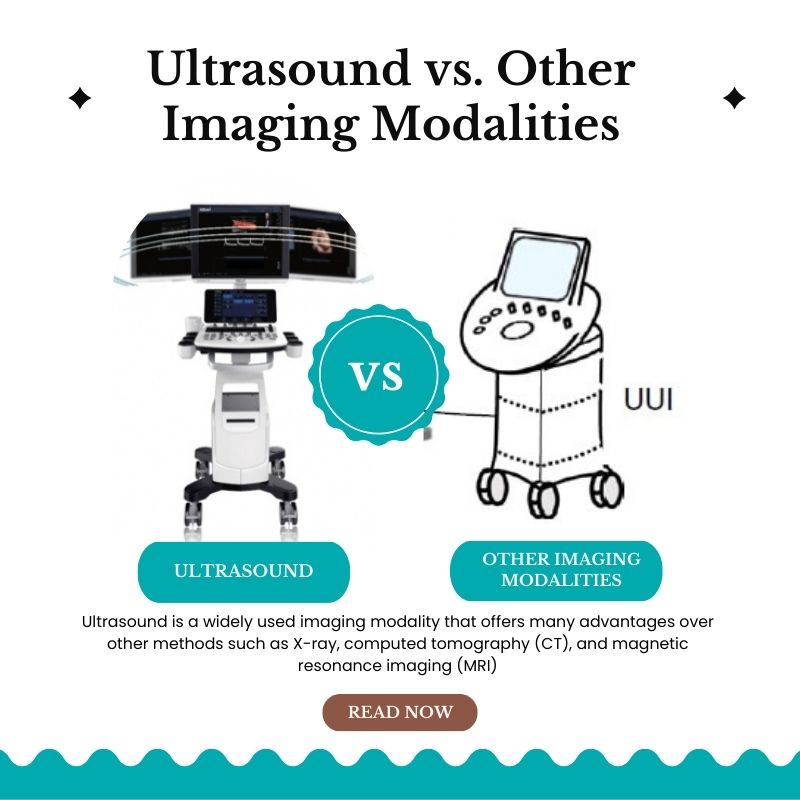
Introduction:
Ultrasound, a widely employed imaging method, stands out among various modalities such as X-ray, computed tomography (CT), and magnetic resonance imaging (MRI). This article delves into a comparative analysis, shedding light on the advantages and limitations of ultrasound in contrast to its counterparts.
X-ray:
As the oldest and most prevalent imaging modality, X-ray employs ionizing radiation to capture internal body structures swiftly and economically. However, its drawbacks include potential long-term radiation effects, low contrast and resolution, and limited capacity to portray three-dimensional structures.
CT:
Building upon X-ray technology, CT generates cross-sectional images with improved contrast and resolution. Nevertheless, CT comes with increased radiation exposure, higher costs, limited accessibility, and discomfort associated with prolonged immobility.
MRI:
Using a powerful magnetic field and radio waves, MRI produces high-contrast, high-resolution images without ionizing radiation. Despite its exceptional imaging capabilities, MRI is expensive, less accessible, and may induce discomfort due to the need for extended stillness, especially for patients with metal implants.
Ultrasound Advantages:
Ultrasound, utilizing high-frequency sound waves, emerges with distinct advantages. It bypasses ionizing radiation, making it safer, portable, and easily deployable in real-time situations. Cost-effectiveness and widespread availability further enhance its accessibility.
Ultrasound Limitations:
However, ultrasound does have limitations, including lower contrast and resolution compared to CT and MRI, operator-dependency, and susceptibility to air or bone interference, hindering penetration into specific body areas.
Quality of Ultrasound Machines:
The performance of ultrasound is heavily influenced by machine quality. Trivitron Healthcare’s Ultrasound Scanners stand out in the market, boasting advanced features such as high-frequency transducers, Doppler capabilities, tissue harmonic imaging, and 3D/4D imaging for comprehensive diagnostics.
Trivitron Healthcare’s Ultrasound Scanners Features:
These scanners incorporate a range of features like elastography, contrast-enhanced ultrasound, panoramic imaging, needle visualization, and automated measurements for various parameters. Additionally, user-friendly interfaces, ergonomic designs, and reliable services contribute to their appeal.
Affordability and Availability:
Trivitron Healthcare emphasizes affordability, offering ultrasound machines with varying prices based on transducer types, installed software, included accessories, and delivery charges. Prospective buyers are encouraged to compare prices from different sellers and explore online and offline purchasing options.
How to Access Trivitron Healthcare’s Ultrasound Scanners:
Interested individuals can explore Trivitron Healthcare’s products, specifications, and prices on their website (www.trivitron.com) or contact them directly via phone, email, or chat for additional information, quotes, or demonstrations. Physical stores and authorized dealers also provide opportunities for in-person evaluations.
Conclusion:
Ultrasound emerges as a versatile imaging modality, boasting advantages over traditional methods. Despite its limitations, choosing a high-quality ultrasound machine is crucial for overcoming challenges and ensuring optimal image quality. Trivitron Healthcare’s Ultrasound Scanners for sale stand as a prime example, offering advanced features, user-friendly design, and affordability, making them a commendable choice in the market.


